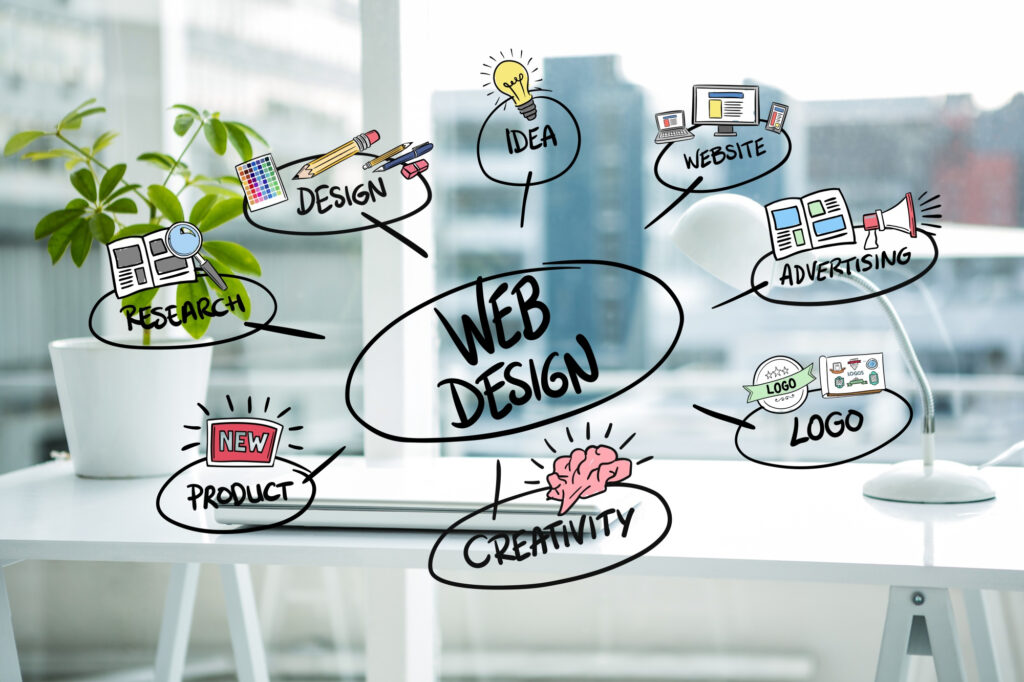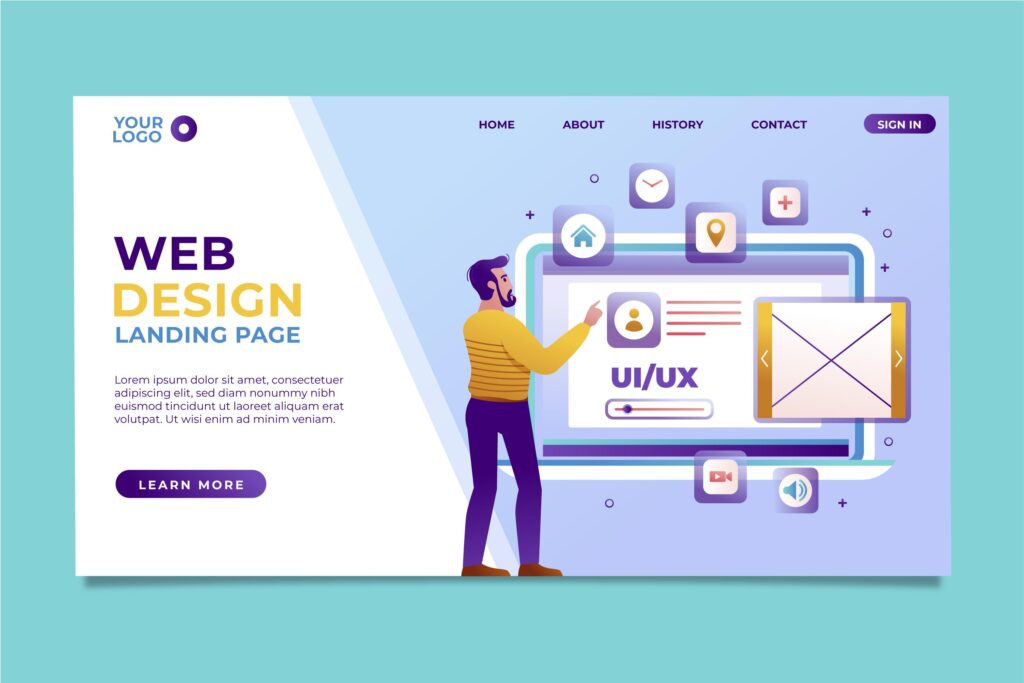Web Design
Web design is the process of creating the visual appearance and overall user experience of a website. Think of it as digital architecture . It’s not just about making a site look pretty; it’s about making it functional, accessible, and intuitive for users. The goal is to deliver information or a service effectively while keeping the user engaged and happy.

Key Components of Web Design
- Visual Design: This includes the site’s aesthetics—the layout, color scheme, typography, and imagery. Designers use these elements to establish the site’s brand identity, guide the user’s eye, and evoke a specific feeling. A good visual design makes the site memorable and pleasant to interact with.
- User Experience (UX) Design: This is the core of modern web design. UX focuses on how a user interacts with the site. It involves creating a clear site structure, logical navigation, and an effortless flow from one page to the next. Designers often use wireframes and prototypes to test and refine the user journey, ensuring they can find what they need quickly and easily.
- User Interface (UI) Design: UI is the specific set of elements users interact with—like buttons, forms, menus, and sliders. It’s the look and feel of the interactive parts. UI designers ensure these elements are clearly recognizable, consistently styled, and responsive to user input.
- Content Strategy: While not purely design, the way content (text, images, videos) is organized and presented is a major design consideration. Good design highlights important content, uses headings effectively, and ensures text is easy to read.
.

The Design Process
The creation of a professional website typically follows a defined process:
- Discovery & Planning: This involves understanding the client’s goals, target audience, and content requirements. Research is key here to inform the design decisions.
- Structure & Wireframing: Designers map out the site’s skeleton—its basic structure and hierarchy—using wireframes. These are simple, black-and-white layouts focused solely on functionality and content placement, ignoring visual style for the moment.
- Visual & Prototype Design: This is where the aesthetics come in. Color, typography, and imagery are applied to create a visual design. Interactive prototypes are often created to test the design and flow before development starts.
- Development & Testing: The final design is translated into code (HTML, CSS, JavaScript). Rigorous testing is performed to ensure the site works flawlessly across different browsers, devices, and screen sizes—a concept called responsive design.
- Launch & Maintenance: After launch, the site is continually monitored for performance and user feedback, often requiring ongoing updates and refinements.

Why Design Matters
A poorly designed website can frustrate users, drive away potential customers, and damage a brand’s credibility. Conversely, good web design builds trust, improves conversions, and keeps visitors coming back. In today’s competitive online environment, a website is often a business’s most important marketing tool. Therefore, investing in thoughtful, user-centered web design is essential for success. It’s the difference between a storefront people walk past and one they excitedly enter.
